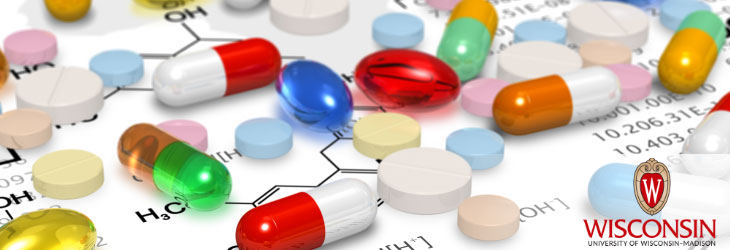Therapeutics & Vaccines

Retinoic Acid: A New Treatment for Sleep Apnea and Hypopnea
WARF: P150330US02
Inventors: Tracy Baker, Gordon Mitchell, Daryl Fields
The Wisconsin Alumni Research Foundation (WARF) is seeking commercial partners interested in developing a new approach for controlling and preventing sleep apnea that uses retinoic acid (RA).
Overview
Sleep apnea affects an estimated 18 million American adults annually. People with sleep apnea can develop conditions such as systemic and pulmonary hypertension, metabolic syndrome, insomnia, neuro-inflammation or cognitive impairment, shortening life and diminishing its quality.
Two main types of sleep apnea are central (lowered urge to breathe) and obstructive (blockage of respiratory passages). Hypopnea, a related condition, is characterized by slow or shallow breathing.
To date, there exists few pharmaceutical approaches to this problem; surgery and continuous positive airway pressure (CPAP) remain the most common interventions for obstructive sleep apnea (OSA), with no standardized treatment for central sleep apnea/hypopnea (CSA) available. Lack of patient compliance with cumbersome CPAP equipment and lack of effective surgical options to increase respiratory drive have necessitated more targeted and comprehensive treatments of CSA and OSA.
Two main types of sleep apnea are central (lowered urge to breathe) and obstructive (blockage of respiratory passages). Hypopnea, a related condition, is characterized by slow or shallow breathing.
To date, there exists few pharmaceutical approaches to this problem; surgery and continuous positive airway pressure (CPAP) remain the most common interventions for obstructive sleep apnea (OSA), with no standardized treatment for central sleep apnea/hypopnea (CSA) available. Lack of patient compliance with cumbersome CPAP equipment and lack of effective surgical options to increase respiratory drive have necessitated more targeted and comprehensive treatments of CSA and OSA.
The Invention
UW–Madison researchers have developed a new method for treating sleep apnea and hypopnea with retinoic acid.
A patient can be given a retinoid or retinoic acid receptor agonist such as all-trans RA (ATRA), 13-cis RA (isotretinoin) or 9-cis RA (alitretinoin). These compounds target the mechanisms that cause sleep apnea in two ways. First, they increase the respiratory drive (urge to breathe). Additionally, they reduce the apneic threshold (the level of CO2 necessary for the induction of breath) to normal levels.
A patient can be given a retinoid or retinoic acid receptor agonist such as all-trans RA (ATRA), 13-cis RA (isotretinoin) or 9-cis RA (alitretinoin). These compounds target the mechanisms that cause sleep apnea in two ways. First, they increase the respiratory drive (urge to breathe). Additionally, they reduce the apneic threshold (the level of CO2 necessary for the induction of breath) to normal levels.
Applications
- Prevention and treatment of central and obstructive apnea/hypopnea
Key Benefits
- Should increase treatment compliance among patients
- Pharmaceutical rather than surgical or external intervention
- Directly treats the primary mechanisms of apnea/hypopnea
Stage of Development
Animal studies have shown a 50-75% increase in respiratory drive as well as a normalized apneic threshold. This technology is in the preclinical phase.
Additional Information
For More Information About the Inventors
Tech Fields
For current licensing status, please contact Rafael Diaz at [javascript protected email address] or 608-960-9847